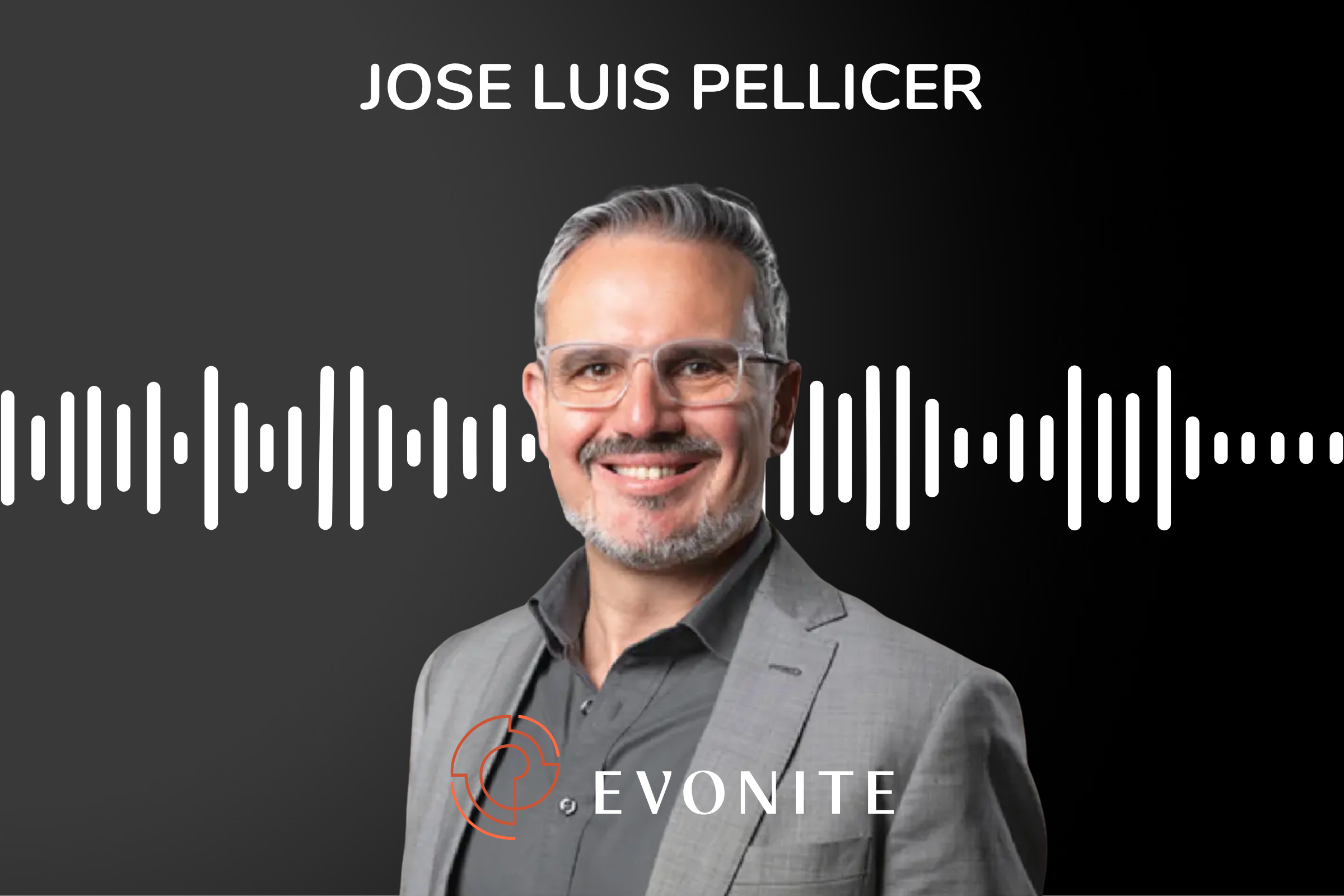Driving workplace performance with biophilic soundscapes
Season 2, Episode 2 – with Evan Benway. Founder and MD, Moodsonic.
Welcome to a fascinating conversation with Evan Benway, from Moodsonic, as we explore the power of biophilic soundscapes in shaping the future of workspaces.
Evan Benway
Growing up as the child of a classical pianist and a cellist, Evan Benway developed a keen interest in sound from an early age. His career path led him to the tech industry in California, where he experienced first-hand the struggle of concentrating in a large open-plan office. Realising the need for a better solution, Evan left the corporate world to establish MoodSonic, a London-based company committed to transforming office spaces through biophilic soundscapes.
Moodsonic:
Moodsonic is a technology company working with sound, design and science. Their products are designed for people, with the aim of improving wellbeing, productivity and healing in indoor spaces.
Moodsonic creates positive, intelligent biophilic soundscapes for the built environment.
By introducing biophilic soundscapes indoors, Moodsonic creates healthier and more supportive environments.
Episode summary:
Noise has long been a prevalent issue in workplaces, affecting privacy, concentration, and overall well-being. This problem has only been highlighted by the shift to remote work, where many employees find they can focus better at home than in an office specifically designed for work. Traditional solutions have aimed at eliminating noise, often leading to unnaturally quiet, lifeless environments, in which employees are in no rush to return to.
What are Biophilic Soundscapes?
Biophilic soundscapes are specially curated background audio that provide a subtle undercurrent of support for various activities in the office environment. Drawing from nature's own harmony, research has shown that biophilic soundscapes offer a far more productive background for work than uninterrupted silence. Certain natural sounds, like the trickling of water or the gentle chirping of birds, signal to our evolved brains that an environment is peaceful, safe, and nurturing.
In our conversation, Evan takes us through the concept of biophilia, our inherent love for nature, and how this innate attraction can be incorporated into soundscapes to foster creative thinking, enhance focus, stimulate productivity, reduce physical and mental stress, and even cue our bodies' circadian rhythms.
We also explore Moodsonic's innovative approach to integrating sound and lighting, creating visually and acoustically harmonious spaces. And discuss the role of soundscaping in creating sensory zones within a workplace, catering to diverse sensory preferences and needs.
Evan shares the successes of Moodsonic, illustrating how strategic soundscaping can mitigate distractions, stimulate productivity, and adapt to spatial changes within the office, shedding new light on how we can rejuvenate and personalise our workspaces.
“When you look at offices, the number one thing that people complain about globally is sound, and there's sort of two sides of the coin. One is distraction. So, as I was describing in that scenario, people are distracted by sound in the environment, specifically, speech we're distracted by speech more than anything else, more than phones ringing or you know, even your crisp chewing. Then you know the top complaint is speech, and due to our evolutionary biology, we pick up on speech readily. We're not very good at ignoring it, so that makes it a big complaint and a big distraction. The other side of that coin is privacy, and so we can come back to the crisps example and the fact that you are aware that you are not privately chewing these crisps. Typically, people have speech privacy issues in offices, so in offices in which people are dealing with sensitive information, you know, financial information or otherwise, or even just trying to have a collaborative conversation. This lack of privacy is a big issue, and I spend a lot of time in tech companies that are trying to engender collaboration through clever design, and this is a big problem. People don't want to come in and collaborate when they're aware that saying something they're distracting everyone else, is being overheard by everyone else.”
“Historically, a war has been waged on noise and people said, okay, if sound is a problem, we need to cut down the noise levels, and the sound pressure level metre has been used as a gauge of whether an office is acoustically healthy or not, the idea being take down the sound pressure level and it will be better. Unfortunately, it's not that simple. Quiet isn't necessarily a good thing, and I should say silence is not necessarily a good thing.”
" If you're going to have an office at all, you'd better make a good value proposition for people to come in and use it. Otherwise, you're just wasting your money… But those [companies] who are doing a good job and are getting people back into the office, they've recognized that the office has changed. They're not forcing people necessarily to come back in a certain number of days, but they're creating workspaces that are better for people, that are more inviting, that offer them something that they don't have at home, in particular, prior to the pandemic.”












